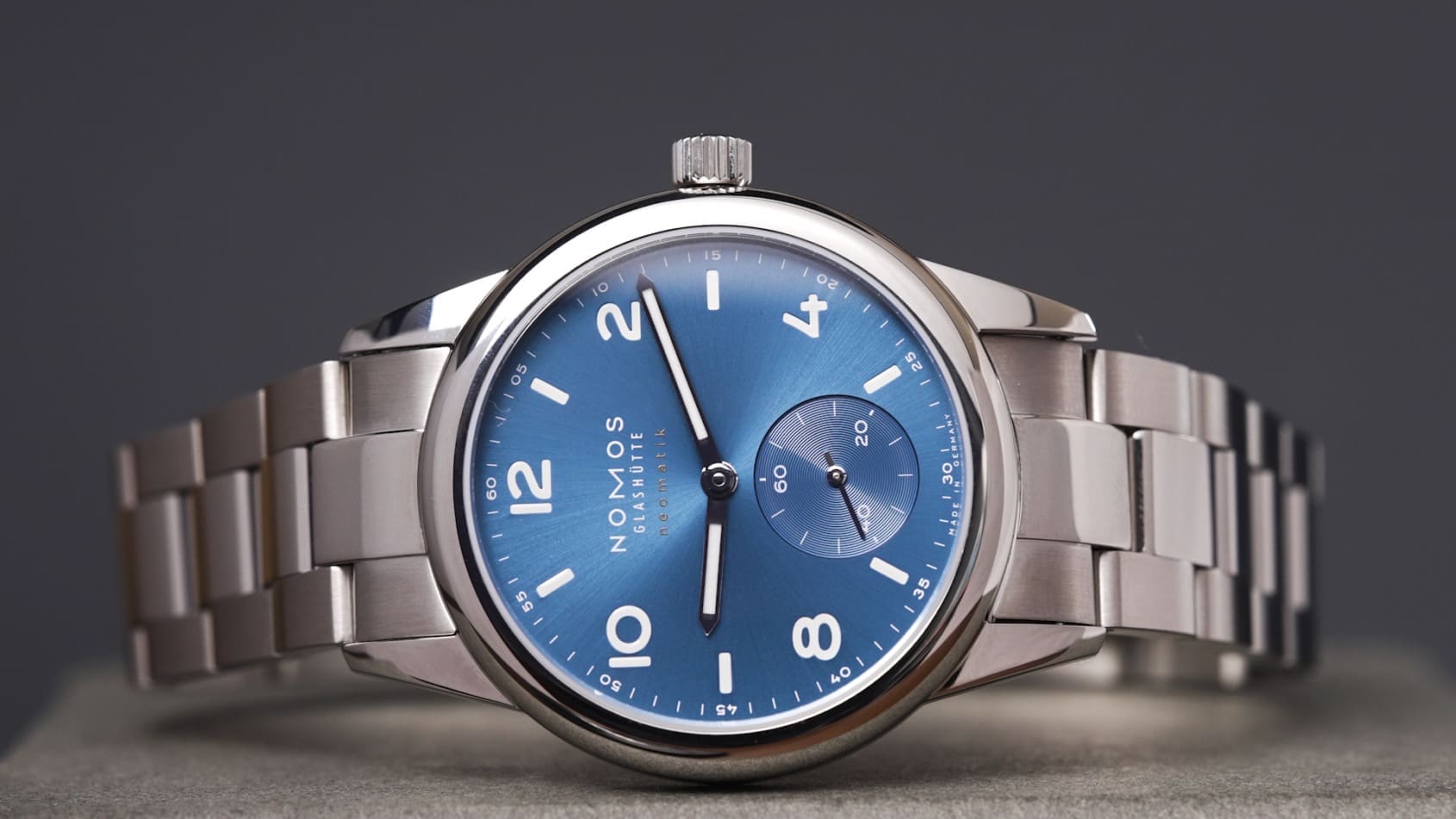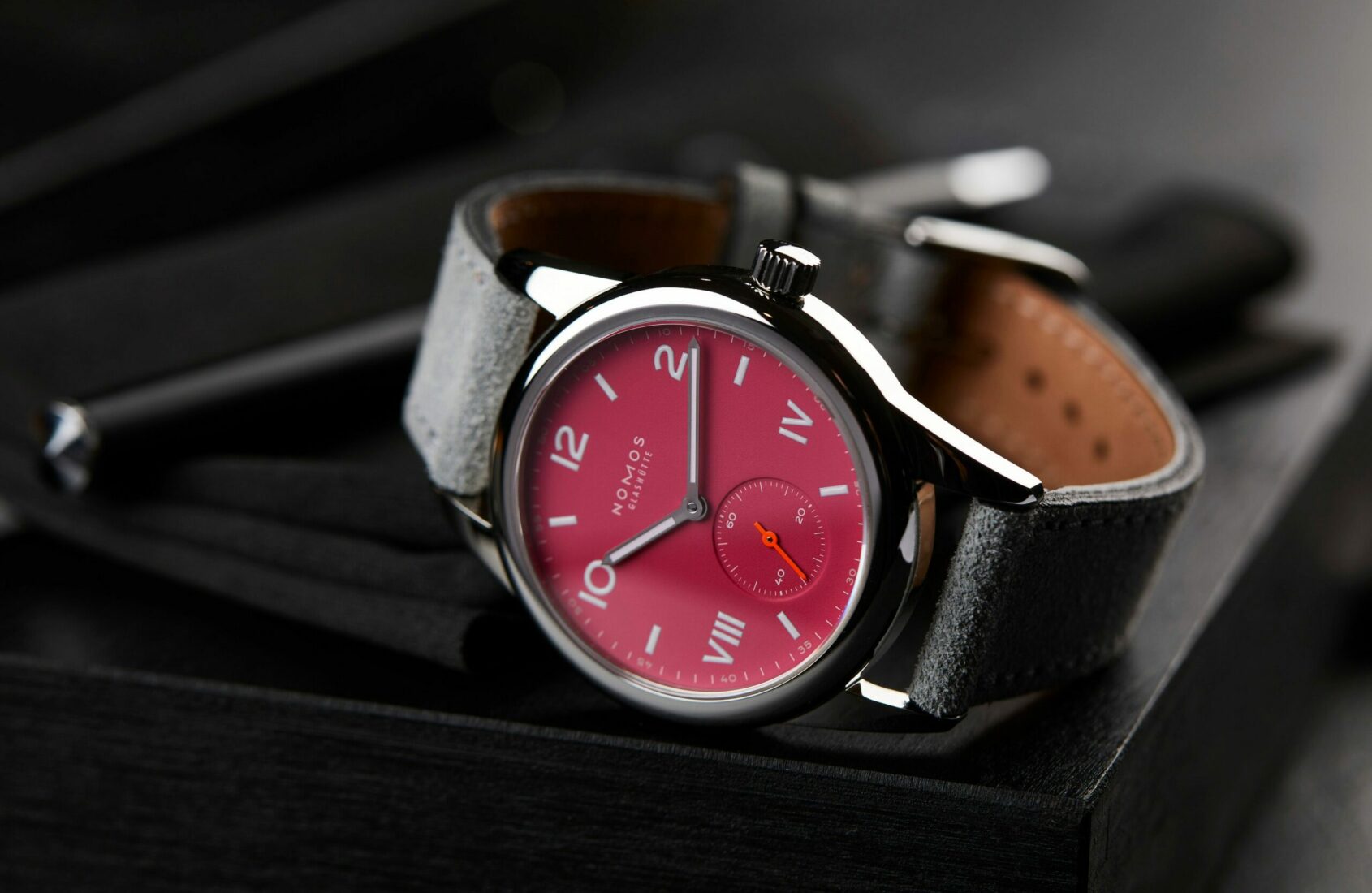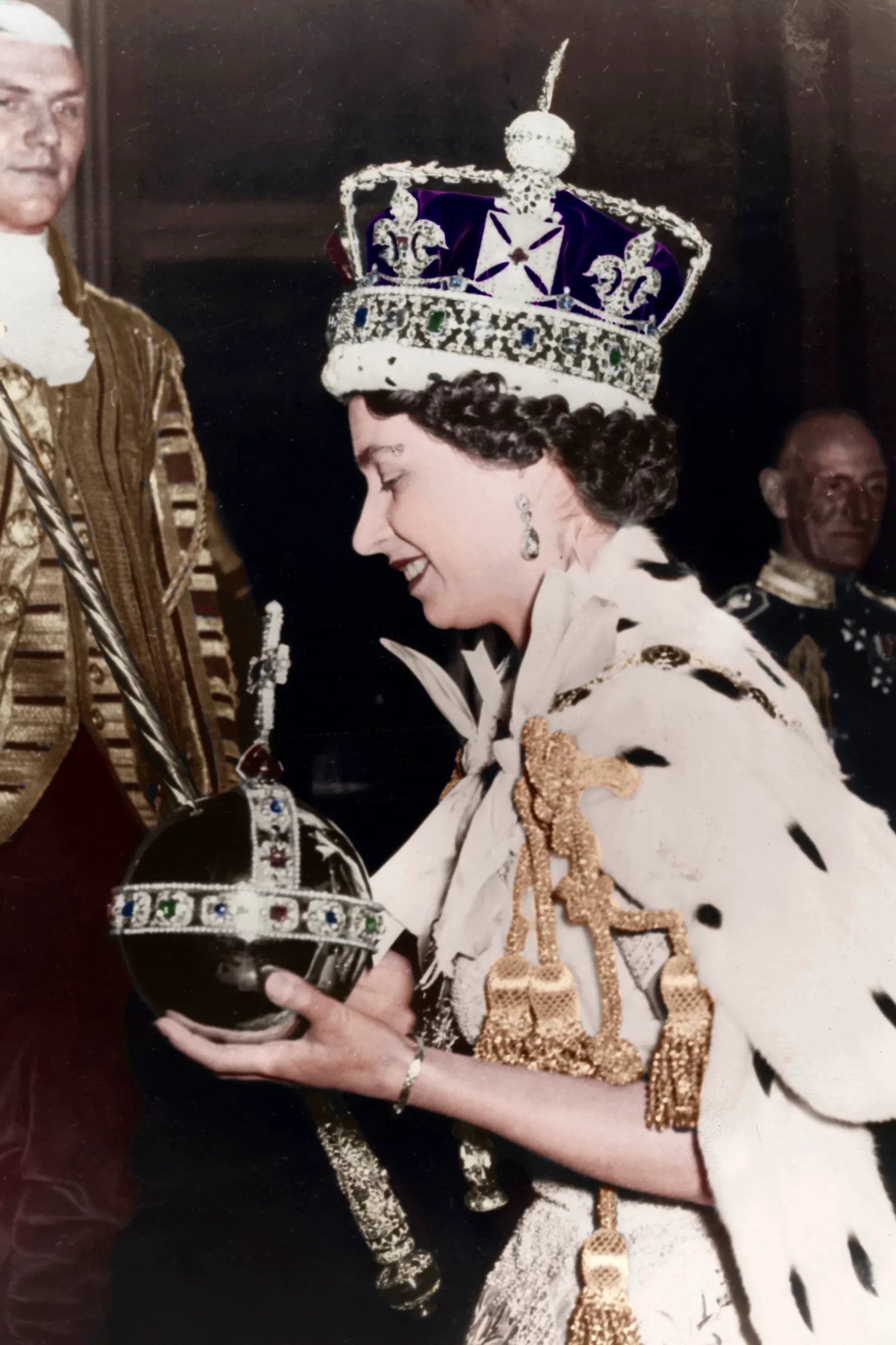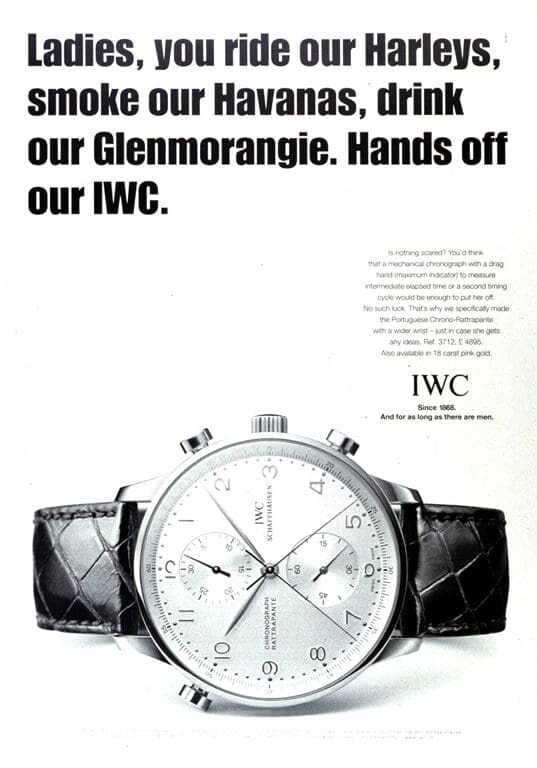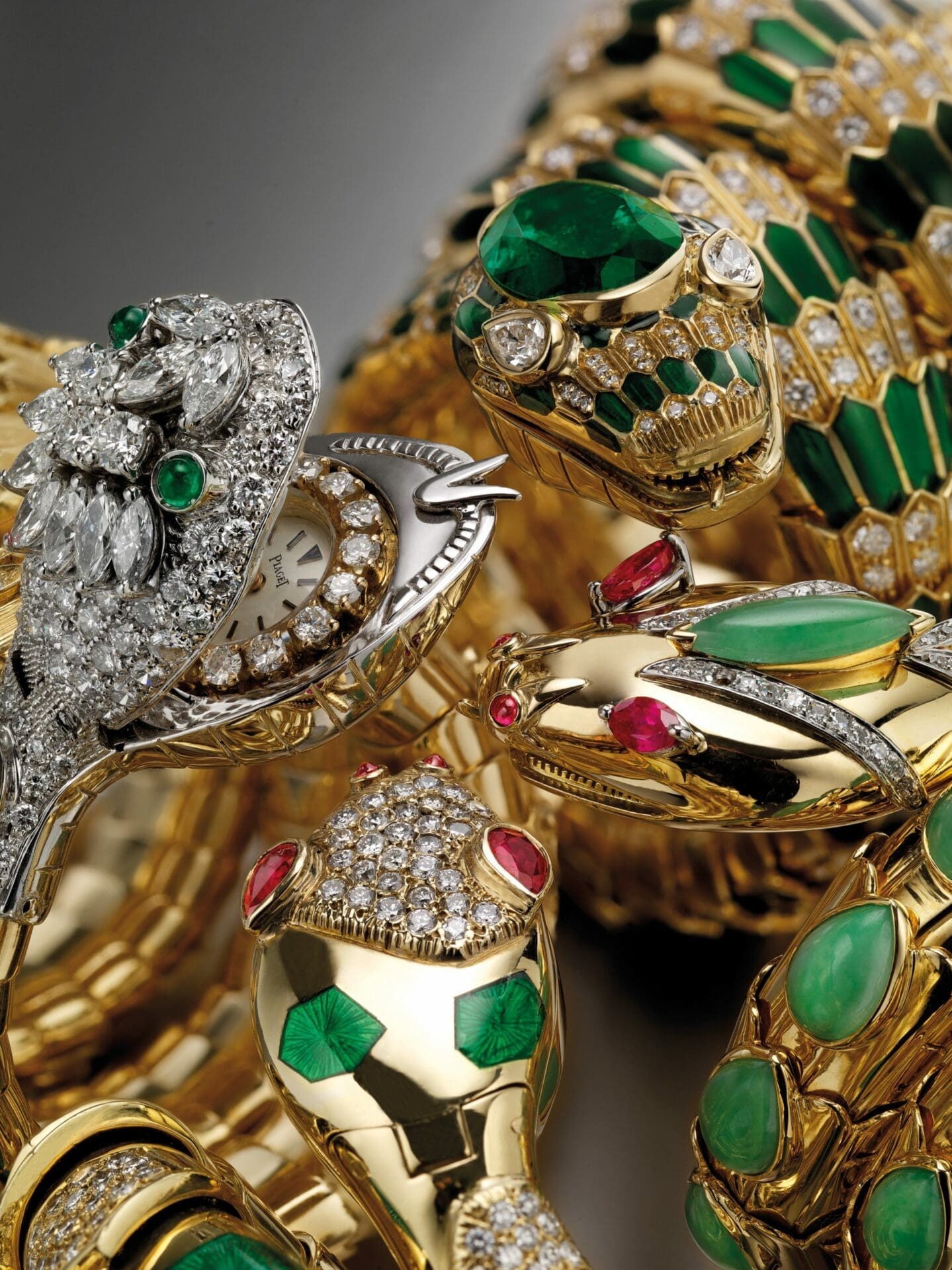Some reflections on female watches on International Women’s Day
Kylie Lloyd-WyattFor me, this International Women’s Day feels somehow different or perhaps more poignant to previous years in our horological microcosm. That’s because, I think, perhaps we are seeing a shift in the way that women and indeed the larger concept of gender is portrayed in watch culture.
For over a century, watches have been clearly defined as female or male based on their aesthetic. To dig right into stereotypes here (though there are, of course, exceptions), broadly speaking a masculine aesthetic is linked to the notion of men as strong and heroic types that like mechanical things, rugged activity and displays of conspicuous wealth. Women, on the other hand, are “the fairer sex” with a penchant for fashion, gems, the colour pink and no interest in mechanical objects or timekeeping.
In recent years, however, we have seen women challenging the traditionally narrow definition of the women’s watch aesthetic and manufacturers are starting to follow. As I see it, there are three main ways women interact with watches today. Firstly, there are watches created in a jewellery style that honour traditional aesthetics. Secondly, there are watches that include women in a traditionally masculine aesthetic and finally there are more non-binary watches, a far more progressive notion.
But before we look to history, I want to look forward to a modern and frankly brilliant interpretation of what the women’s watch world could be.
Modern non-binary brilliance
You’d have to have been living under a rock to have missed the rise of gender fluidity and non-binary identification. For the uninitiated, traditionally society has defined gender as a male or female polarity, without a continuum between or an opportunity for non-conformity altogether. Those brave enough to challenge the norm have historically been at best ostracised and at worst criminalised or physically harmed. Though many continue to fly a gender-normative flag, thankfully society is shifting towards inclusion. Taking society’s cue, the watch industry is also beginning to embrace inclusion spurring a welcome explosion of gender-neutral watches by size and design, of which German watchmaker and Glashütte local Nomos is a notable forerunner and one of my personal favourites.
With the Bauhaus design ethos of function and form in harmony at its core, Nomos watches naturally sideline gender as a driver of design in favour of legibility, simplicity and proportion. As I see it, the only relevance gender may have in Nomos’ design is case size, where women on average have smaller wrist circumferences, but you could equally argue case size as an extension of Bauhaus where, quite simply, the watch size matches the wrist size. As such, across most of the collection, Nomos offers a smaller and larger case without significantly altering the overall design.
Nomos also bucks the gender trend where movements are concerned. Since its creation in 1969, quartz movements have often been preferred for women’s watches due to the arcane view that women are not mechanically inclined. Nomos, however, only produce mechanical movements and what stunners they are; completely in house, exceptional quality and finish, even more brilliant given a comparatively low cost-point. Similarly, with their now infamous use of bold dial colour, larger watches come in traditionally feminine colours and visa-versa, further challenging the gender norm.
Though I have many favourites in the Nomos collection, my pick to highlight gender non-conformity is the Club collection and the recently released Club Sport is a case-in-point. The watch is a classic overall design without embellishment that would define a specific gender. It sits in that Goldilocks 37mm case size that suits pretty much any wrist circumference and the website depicts the watch on both a larger and smaller wrist where gender is imperceptible based on styling.
The Polar (blue) and Petrol (green) colour choices are similarly gender neutral and the sunray finish is arresting when it catches the light. For watch geeks like me, the sapphire caseback shows off that insanely well considered and finished DUW3001 automatic movement. Check out this link for a full review of these beautiful pieces.
If you do want to express gender a little more strongly, the Club Campus, available in either 36mm or 38mm cases in a rainbow of colours, has you set. Women with smaller wrists like me looking for a touch of feminine should look no further than the 36mm in deep pink. I personally own and absolutely rate this watch even with its long lugs. Not be to left out, men with larger wrists looking to flex their feminine side can also get into a pink dial in the 38mm case. Now that’s progress.
The first wristwatch
Let’s now go back in time (pun definitely intended) to understand how we define the traditional women’s aesthetic and how it came to be.
If you know me, you know I adore the Cartier Santos in all its forms. It’s a perfect unisex design. You would perhaps be forgiven for thinking that it’s also the first-ever wristwatch. I’ve heard and read many a person report that Louis Cartier’s Santos Dumont created for aviator Alberto Dumont was the first.
This is a fallacy. The honours for first-ever wristwatch go to Breguet in 1810 who created a bracelet style watch for Carolina, Queen of Naples. This was closely followed by Patek Philippe’s similar 1868 creation for The Countess of Koscowitz. Following the royal theme, Queen Elizabeth II wore a tiny bejewelled Jaeger LeCoultre for her coronation and had some pretty special Patek Phillipes across her reign.
How did this happen? These powerful women needed to keep time, but pocket watches just didn’t fit into the pocketless dresses of the era. Powerful royal women also wore some amazing jewellery to convey status and to assert their rule, so paring a watch with a bracelet was a fait accompli. In essence, this was a convergence of practicality with status, perhaps the ultimate power move.
Queens vs housewives
This regal influence has never quite escaped women’s watch aesthetics. But despite its obvious powerful origins, come the early to mid 20th century, when compared to the watches of utility, necessity and heroism worn by those brave men that went to and died in World War I and II, a jewellery watch just didn’t pass the power test. As time passed and watch manufacturers cottoned on to this, with the assistance of watchmaking know-how and brilliant marketing men’s wristwatches quickly rose to become symbols of masculinity and status.
Mid-century women were thought of as the “fairer sex”, financially dependent on their men and in charge of running a household rather than a part of the literal and metaphorical cogs of industry where the ability to control time in the form of a work-day and wages meant power. So, the jewellery watch became a watered-down less complicated version of its powerful origins, a mirror to the apparently fairer and less technologically interested woman of the time.
Women in a men’s world
Though there were some epic and inadvertent challenges to the women’s watch aesthetic, Jackie O’s Cartier Tank and Princess Diana’s Cartier Tank Française spring to mind, there just wasn’t enough momentum to shift the narrative created by decades of entrenched gender ideology and clever marketing. Even the late 1960s sexual revolution in Europe’s watchmaking heartlands didn’t do it.
Through the 1990s, as the world gradually became more connected through global print, television and film based media, women perhaps cottoned on to the idea they perhaps could embody power by experimenting with more traditionally masculine aesthetics. Though we love them, IWC unfortunately responded to this trend with their 2000s ad campaigns that jealously guarded the men’s watch aesthetic as strictly off-limits to women.
Really, it wasn’t until the rise of social media and the #metoo movement, which empowered women’s collective ability to challenge stereotypes that watch brands started to listen and, to give IWC credit, across recent years they have been a forerunner in using more gender inclusive marketing across their collections.
Of course, I think that all of the 41mm Pilot Watches are fair game even for my tiny 5.5-inch wrist, but it’s amazing to see IWC place the 41mm Special Flight Tactical Instructor “SFTI” Spitfire – a watch only issued to real-life graduates of the Top Gun flight school – on the wrist of Natasha “Phoenix” Trace in Top Gun – Maverick as she nails push-ups on the tarmac. To me, this might be the epitome of women crossing over into a very traditionally masculine aesthetic in a mainstream rather than fringe way. What a badass move from IWC.
A word on shrink, pink bling quartz
It would be remiss of me to not cover “shrink and pink” in this discussion. Though far less common now, shrink and pink was a marketing strategy to target women; by simply making whatever you wanted to sell smaller and in the colour pink.
Other similarly regressive strategies in the watch world, involved changing designs to suit women by adding gemstones and a quartz movement. Often this resulted in turning a reasonable men’s watch into a far inferior women’s one.
An argument for the jewellery watch
This brings us back to an argument for jewellery watches. Contrary to some content on Reddit, there is absolutely nothing wrong with small, gem-set, pretty watches regardless of gender and I love the idea of both men and women feeling comfortable enough to rock a diamond Cartier. But for women, there’s something more empowering to get across here. The history of powerful royal women inspiring the merging of jewellery and timekeeping in the first wristwatches needs to be recognised and celebrated rather than pushed aside.
Thankfully, watch enthusiasts are starting to re-examine the value of a feminine aesthetic in horology and women are starting to see the jewellery aesthetic as markers of artistry, beauty and power. This has sparked a renewed interest in smaller traditionally feminine watches including the exceptionally provocative and powerful Bulgari Serpenti Tubogas (the Serpenti Spiga single spiral in black ceramic and rose gold turn is my favourite if anyone is looking for a birthday present for me). Bejewelled style icon and power-house Elizabeth Taylor knows there was nothing more empowering than wearing a snake on your wrist when she played Cleopatra in 1963 and has remained a Serpenti addict ever since.
Perhaps the watch-o-sphere is also starting to appreciate that jewellery watches are more than jewellery, they are beautifully crafted timepieces, symbols of femininity and power and should be valued as such and worn in the way they are intended.
Women’s watches are…
So women, the upshot is that a women’s watch can be, well, whatever you want it to be. It can be non-binary, perfectly unisex, bejewelled and dazzling or tough and masculine. They all fit in the spectrum of who women are and how a watch can be used to express identity. All watches are legitimate ways to enjoy horology, none are automatically better than the others, though I will continue to eschew poorly designed and thoughtlessly executed pieces created for the sake of it.
So, this IWD wear whatever you want, no holds barred, though extra points if its green, purple or white. Wear it with pride and with that we can continue to expand the narrative of women in watches.







